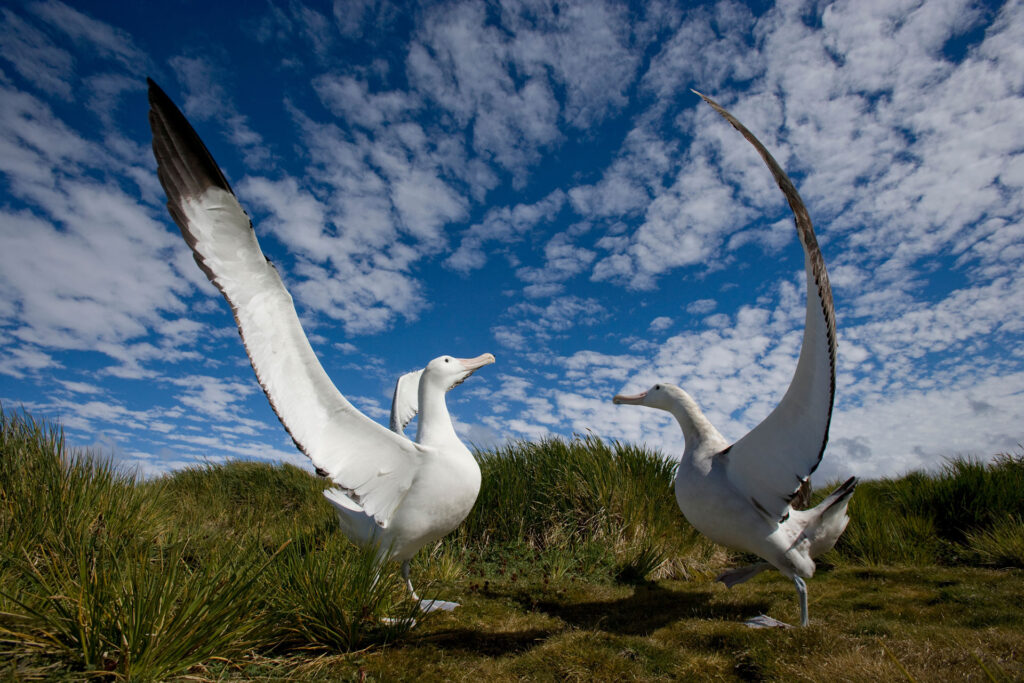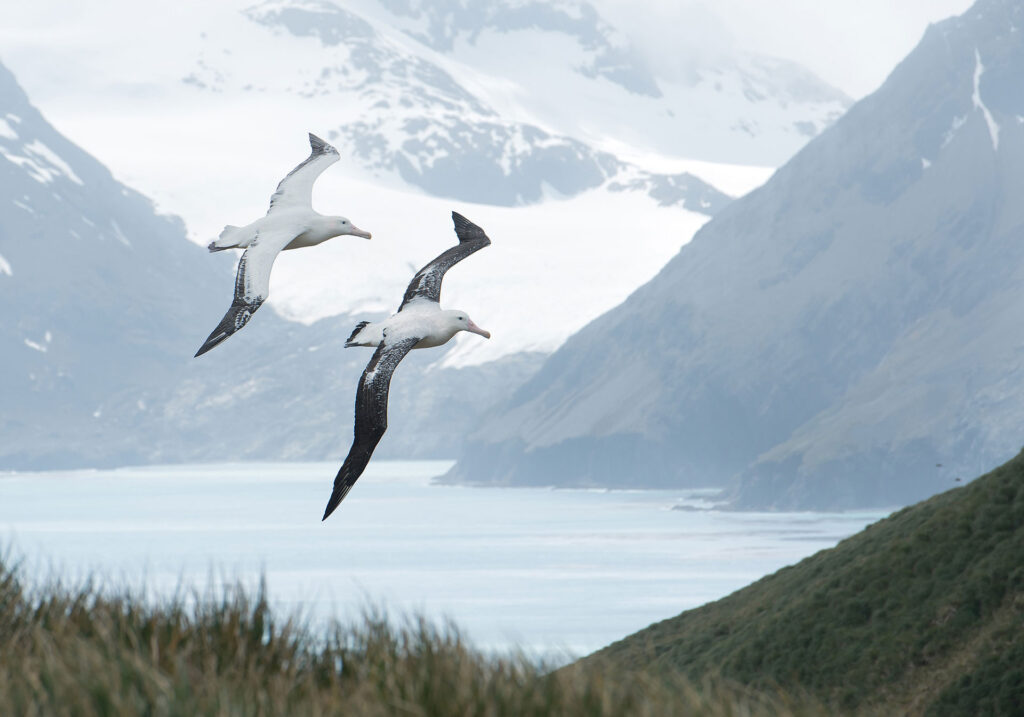Birds play an essential role in maintaining the health of our oceans. One species that has always fascinated me is the Albatross. I fondly recall childhood films like The Rescuers (1977), which featured Orville, the lovable Albatross, bravely flew Bernard and Miss Bianca on their rescue mission. However, beyond their charming cinematic portrayals, Albatrosses are vital allies in the battle against marine degradation.
Meet the Snowy Albatross
The Snowy Albatross is a magnificent seabird distinguished by its striking white plumage, grey-black wings and iconic hooked bill. It boasts the largest wingspan of any bird, reaching an impressive 3.5 meters!
These remarkable birds spend most of their lives gliding over the open ocean, returning to the water’s surface to rest at night. Gathering food for themselves and their young is no small feat; their foraging trips can last anywhere from several hours to an astonishing 50 days! With a varied diet that includes fish, crustaceans, jellyfish and cephalopods, they are not picky eaters. They also scavenge carrion from penguins and seals, making them efficient recyclers of nutrients in their environment.

Life at Sea and Bonding for Life
Snowy Albatrosses are known to traverse the Southern Ocean up to three times a year, covering distances of over 75,000 miles! Young Albatrosses embark on extensive sea voyages lasting 5 to 10 years before returning to their natal islands to settle down and find a lifelong mate.
The courtship process of these birds is quite a spectacle. I highly recommend watching their courtship dance; it’s truly extraordinary!
But in short, it is a combination of bill clacking together, circling each other in coordination, extending their necks and calling to the sky while spreading their wings wide.
Snowy Albatrosses have perfected the art of long-distance relationships. These romantic birds spend significant time at sea as solitary wanderers, only to return to their partners. Together, they share responsibilities, care for one another and build and maintain their nests in preparation for the single egg they will lay every two years.
Regulating Fish Populations
The Snowy Albatross plays a crucial role in regulating fish populations. By preying on smaller fish and squid, they help prevent any single species from becoming overly dominant. This is particularly important given the current boom in squid populations, largely driven by climate change and rising sea temperatures. Their predation is vital for maintaining the natural balance of the ocean’s ecosystem.
Contributing to Nutrient Cycling
In addition to regulating fish populations, Snowy Albatrosses contribute to the nutrient cycle of the oceans. Their feeding and excretion processes help recycle nutrients back into the water, promoting the growth of phytoplankton. These tiny organisms are essential to the marine food web, playing a critical role in carbon sequestration and oxygen production.
One of the most fascinating aspects of Snowy Albatrosses is their ability to hunt at night, a skill that few other seabirds possess. By fishing in the dark, they reduce competition from other seabirds and marine creatures, making them more effective hunters.

Cause for concern
However, despite their exceptional flying and hunting abilities, these majestic birds are not immune to the threats facing many bird species today. Although they have few natural predators, Snowy Albatrosses, along with other Albatross species, are experiencing a decline at a faster rate than most other bird groups.
As the most well-travelled birds in existence, they face numerous threats, including dangerous fishing practices – the expansion of commercial longline fisheries in their feeding areas poses significant risks, as these birds can become entangled in lines or accidentally swallow hooks while hunting for bait. Bycatch is a leading cause of population decline for these magnificent birds.
While it’s disheartening to end on a negative note, the reality is that the future of the Snowy Albatross looks bleak unless immediate action is taken to address unsafe fishing practices. Fortunately, there is hope. On the Island of South Georgia, bycatch of Snowy Albatrosses has been significantly reduced through regulations and the implementation of preventative measures.
Protecting this species requires a collective effort. These remarkable birds travel across various oceans, meaning international cooperation is essential in securing a stable future for them.
There are so many incredible organisations working towards a brighter future for Albatrosses – please see just a few of them below.
https://www.birdlife.org/birds/albatross
https://www.rspb.org.uk/helping-nature/so-many-ways/explore/defend-the-albatross
https://www.catchfishnotbirds.nz